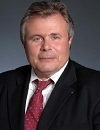Russia - archive 1
To last news on topic
Contract on Turkey nuclear plant nearly ready - Russian deputy PM
Russia, Ukraine to draft long-term nuclear fuel deal by June
Joint Russian-Turkish NPP construction deal to be sent to parliament in days - Turkish minister
Russia may disclose data on nuclear stockpiles - Foreign Ministry
Obama resubmits with Congress U.S.-Russia peaceful nuclear deal
Russia, Turkey agree terms of nuclear power plant construction
Post-Soviet security bloc urges further disarmament efforts
Obama says U.S. could ratify new nuclear arms deal by November
Atomstroyexport and JNPC have signed the Protocols on Final Acceptance of the first stage of Tianwan NPP
Mongolia may decide soon on uranium joint venture with Russia
Russia, Ukraine may create nuclear joint venture - Rosatom CEO
Russia proposes Ukraine forming united nuclear energy holding - PM Putin
Putin to discuss energy cooperation with Italy Berlusconi
Tvel nuclear fuel company takes part in India exhibition
Russia does not back Iranian nuclear conference statement
Russia, U.S. call on other states to join nuclear disarmament
Russia, Brazil discuss Iranian nuclear program
Russian Deputy Foreign Minister to attend Tehran nuclear disarmament conference
Disposal of weapons-grade plutonium to cost Russia up to $3 bln
Nuclear summit in Washington most unarguable - Medvedev
Russia to invest several billion dollars in Argentina's nuclear energy sector
Iran first NPP in Bushehr to be launched in August 2010
Russia last plutonium producing reactor to be closed April 15
Sanctions no threat to Iranian nuclear plant launch - Russian MP
Greenpeace vessel in St. Petersburg for anti-nuclear waste protest
Medvedev announces shutdown of last Russian plutonium plant
No loose nukes in Russia - memorandum
Russia, U.S. will each dispose of 34 metric tons of excess weapon-grade plutonium
Greenpeace protests arrival of French nuclear cargo in Russia
Russia delays launch of new nuclear submarine
Iran starts final test for Bushehr nuclear plant
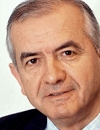 On the nonproliferation policies of the US and Russia
On the nonproliferation policies of the US and Russia
The current stage of international security development has a peculiar feature: the nature of the threats that mankind currently faces. The threat of the world leading powers coming into military collision is slowly receding while threats common to all humanity are gaining ground. Therefore, the potential role of US - Russia cooperation in maintaining international security is expanding. However this potential is far from being used in full.
One possible exception is nuclear and other WMD nonproliferation, where both the USA and Russia, with their massive nuclear stockpiles and arsenals of delivery vehicles, bear the greatest burden of responsibility. With Russia and America signing the new START, a short-term result of uneasy compromises, we have proof of how both countries take this mission seriously. We should bear in mind that Russia’s nuclear arsenal is not just crucial but is in fact the only way of deterring large-scale aggression. Especially since from Russia perspective, the conditions contained in these agreements mean that Russia pays a much higher price for those compromises reached, than do her American counterparts.
U.S. nuclear security summit to focus on terrorist threat
Medvedev says energy sanctions against Iran unlikely
Israeli attack on Iran might lead to nuclear conflict - Medvedev
Global nuclear security demands effective national systems - Kremlin aide
Russia may offer Ukraine $6 billion nuclear loan - Putin
New START treaty benefits both signatories - Russian analyst
Russia signs $400mln deal for nuclear fuel supply for Slovakia NPP
Venezuela, Russia agree plans for nuclear power plant project - Chavez
Money row holds up Belarus's first nuclear power plant
Russia contributes greatly to atom smasher success - scientist
Russia to set aside 40 tons of low-enriched uranium for guaranteed pool
Ukraine's foreign minister names areas of cooperation with Russia
Russia, China to build two new reactors at Tianwan nuclear power plant
Russia needs minimum 50 nuclear subs for fleet - Navy Vice Admiral
India to get Russian nuclear submarine for 10-year lease - paper
Russia to float out new nuclear sub on May 7
India could offer new NPP construction site to Russia
Russia reiterates interest in building Egyptian nuclear plant
French activists block train with radioactive waste for Russia
India may join Russia in establishing Angarsk nuclear fuel bank
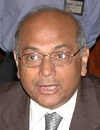 Indian nuclear energy chief: Russia has an advantage: it has a reactor, others can only show papers
Indian nuclear energy chief: Russia has an advantage: it has a reactor, others can only show papers
How interesting is the Russian offer to India to become a stakeholder in the Angarsk facility?
India is interested as a donor country. And we are looking into it. It is attractive, but requires a very detailed techno commercial dealings which have not been completed.
We have to evaluate the facility, and economics here comes as a major factor. It is not just a political arrangement.
So I cannot straight away say that India is joining just now, but India has a capability of joining as an equal partner in some of these activities.
What do you think about an international market of plutonium for peaceful use in the energy sector? Is this a realistic perspective?
This question is a bit early today. Eventually India may be in a position to provide plutonium to other countries, but today our programme does not have so much plutonium to provide it to international market. This will require a very stringent material accounting system, safeguarding system, and safeguard veryfication system. That is why this question is a little premature.
India seeks greater nuclear cooperation with Russia - official
Iran's Bushehr NPP to be launched this year - Lavrov
Russia says ready to establish nuclear fuel bank by yearend
Russia to maintain but not build up nuclear deterrent - Medvedev
Russia Starts Work On Baltic Nuclear Plant
Russia to spend $1.7 billion on nuclear power plant projects - Putin
No radiation danger as scrapped nuclear sub catches fire in north Russia
Russian delegation to discuss Turkey nuclear power plant plan
Bulgaria seeks Russian loan to fund nuclear plant construction
International proposals still valid despite Iranian uranium enrichment
No new nuclear proposals to Iran - Russia
Medvedev says nuclear energy Russian priority amid climate change
Putin proposes increased supplies of gas to Lithuania on good terms
Russia moves closer to backing Iran sanctions
Russia's work to build China's Tianwan nuclear plant stage to cost $1.8 bln
Moscow warns Tehran over uranium enrichment plans
Russia starts building 4th nuclear sub to carry Bulava missile
Sekmokas: Russia won’t stop Visaginas
Russia urges Iran to reassure world about nuclear program
Russia, Iran begin talks on nuclear issues
Russia positive on Iran uranium offer
Ship carrying nuclear waste arrives in St. Petersburg
Russia toys with exotic nuclear space projects
Moscow dismayed by Iran's reaction to nuclear proposals
Russia, U.S. to resume START talks February 1 - State Department
 Russian-American START treaty hinges on simultaneous ratification
Russian-American START treaty hinges on simultaneous ratification
Russia and the United States have agreed to resume talks on a new strategic arms reduction treaty. A U.S. delegation led by National Security Advisor General James Jones and the Chairman of the Joint Chiefs of Staff, Admiral Mike Mullen, is expected in Moscow soon.
U.S. President Barack Obama and his Russian counterpart, Dmitry Medvedev, agreed last year to reduce the nuclear warhead stockpile to between 1,500 and 1,675 for each country.
A higher level of the negotiators shows that the sides have made progress toward signing a new START treaty, which was at the top of their agenda last year. The new treaty is to replace the 1991 agreement, which expired on December 5, 2009.
Russia and the U.S. failed to finalize a new treaty late last year, but hope to sign it soon.
President Medvedev said commenting on the work to draft a new fundamental treaty on nuclear disarmament. The way it was done in Soviet times is unacceptable - when the Soviet Union ratified the documents and the U.S. did not. We must prepare a document that has been well thought out.
Top Iranian security official's visit to Russia called off
Iran Six participants holding a meeting in New York on Saturday decided against new sanctions on Tehran and will study new political methods to solve the issues, a Russian Foreign Ministry deputy said
U.S., Russia officials talk arms cuts, Iran in Moscow
Moscow says no need for new Iran sanctions
New Russian nuclear submarine to enter service in 2010
Energy institute chief says Earth cycles point to new crisis in 2012
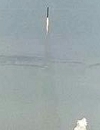 The Bulava missile saga
The Bulava missile saga
The December 9, 2009 test of the RSM-56 Bulava (SS-NX-30) submarine-launched ballistic missile has failed, said the Russian Defense Ministry. There have been 12 other test flights since December 2003.
Without going into technical details, which must be clarified by experts, we must now assess the entire project's status and the implications of the latest abortive test on the future development of Russia strategic nuclear forces.
The decision to develop the Bulava missile was adopted in 1998 when Moscow Institute of Thermal Technology was directed to develop an advanced missile system for the Russian navy.
Institute management claimed that it could promptly develop a new ballistic missile based on the Topol M (SS-27 Sickle B) intercontinental ballistic missile, for the Russian navy. This concept was expected to simplify the deployment of the naval component of Russia strategic nuclear forces and to require less maintenance costs.
Although it is hard to say who initiated such drastic changes, the press claims that Yury Solomonov, director of the Institute of Thermal Technology, Major-General Vladimir Dvorkin are responsible for this.
Russian shipyard says recent radioactive leak poses no threat
Russia close to finishing reactor at Indian nuclear power plant
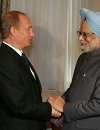 Indian Prime Minister Manmohan Singh interview to Russian media
Indian Prime Minister Manmohan Singh interview to Russian media
Indian economy is showing a very impressive growth. Quarterly figures have proved it. When do you expect the economy of India to rebound, recover from the global crisis which has affected it and to reach the desired level of nine per cent annual growth?
Indian economy has been affected by the global slowdown. Before the global slow down our economy in the previous four years was increasing at an annual rate of nine per cent per annum. Last year, because of the global slowdown the growth rate declined to about 6.7 per cent. This year we expect the growth rate to be 6.5 to seven per cent. In two to three years time, I am confident that the Indian economy can bounce back to the growth rate of about nine per cent per annum. I say this for many reasons. Our savings rate is about 35 per cent of our GDP. Our investment rate is about 37 per cent of GDP. With these savings rate and investment rates, we can sustain a growth rate of nine per cent without difficulty. With an investment of 37 per cent and the capital output ratio of four is to one we can easily attain the targeted growth rate of nine per cent per annum, which I expect we will do.
N.Korea not ready to resume nuclear talks - Russian senator
Russian energy minister says all done to complete Bushehr NPP
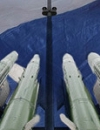 Col. Baranets: Russia has right to use nuclear weapons as it deems necessary
Col. Baranets: Russia has right to use nuclear weapons as it deems necessary
What does that mean? Under the treaty, an American commission inspected Russian arsenals, and a Russian commission went on a similar mission to the United States. And it turned out that Russia liquidated warheads in compliance with the treaty, while the sly Americans stored the scrapped warheads, which created the serious problem of return potential. The U.S. can take warheads from storage and mount them on a missile, which puts Russia at a big disadvantage.
The negotiating teams are now focused on rapidly drafting fair rules for the game because we are tired of being duped.
A few words about the latest Russian statements on nuclear weapons. Nikolai Patrushev, secretary of the Russian Security Council, recently made a series of high-profile statements, one of which frightens our foreign partners. He said that since Russia has nuclear weapons it also has the right to use them as it deems necessary, and also that it reserves the right to deliver preventive nuclear strikes.
Some Western critics immediately said this means that Russia will deliver blows at whomever it wants.
Russia upbeat about IAEA resolution on its uranium initiative
Russia calls on Iran to heed IAEA resolution
Russia dismisses allegation of helping Iran build atom bomb
Iran says Russia honors NPP construction contract
Iran aims to launch first nuclear plant by late March
Russia-EU: restoring energy trust
 Russia close to completing Iran nuclear plant
Russia close to completing Iran nuclear plant
Russia is close to finishing the construction of Iran's first nuclear power plant and is currently making final adjustments, Foreign Ministry spokesman Andrei Nesterenko said on Tuesday.
Russian Energy Minister Sergei Shmatko said on Monday that the launch of the Bushehr nuclear plant in southern Iran may not take place before the end of this year, as earlier planned.
We are fully committed to completing this project. Russia has already supplied fuel for the reactor that has been built, and currently start-up and adjustment work is underway. Close attention is being paid to ensuring the safety of the reactor's work, Nesterenko said.
Upon completion of all necessary operations and tests, the reactor will be launched within the timeframe agreed with the Iranian side, he said.
Nesterenko said that Russian and Iranian specialists have yet to resolve certain technical problems.
He stressed that Russia's work on the project is not affected by the international controversy over Iran's nuclear program.
Russia delays launch of Iranian nuclear power plant
Russia, Singapore say N.Korea nuclear talks should continue
Russia still hopes for diplomatic solution to Iran issue - Lavrov
U.S. delays nuclear summit until May
Russia to contribute $6.5 million to global nuclear security
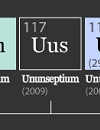 Ununseptium - the 117th element
Ununseptium - the 117th element
Physicists at the Joint Institute for Nuclear Research launched an experiment on synthesis of the 117th element in Mendeleev's periodic table.
The 113th, 114th, 115th, 116th and 118th chemical elements were first synthesized in the same institution.
All transuranium elements, starting from neptunium (93), where produced in three laboratories: in Berkley (U.S.), Dubna (USSR/Russia) and Darmstadt (Germany). USSR and USA competed in producing elements during the past century. Some elements were produced by Soviet and U.S. physicists simultaneously but separately from each other.
To synthesize ununseptium, another transuranium element, berkelium-249, is used. The experiment is carried out in a U-440 cyclotron. The synthesis process: moving at high velocity (1/10 of the speed of light), berkelium ions are ejected from a cyclotron and strike a target, where they are bombarded with calcium nuclei. Ununseptium nuclei can be discovered among the products of the reaction.
25 mg of berkelium-249 necessary for the experiment were provided by physicists from the U.S. Oak Ridge National Laboratory (ORNL).
Russia, U.S. to continue nuclear arms talks on November 9
Russia hails UN support of confidence-building in outer space
Russia develops design for spaceship with nuclear engine
Russia, India, China set to forge energy ties
Russia says new U.S. anti-missile scheme may not be implemented
JSC TVEL supplied the first batch of natural uranium pellets for Indian Pressurized Heavy Water Reactors
The JSC Atomenergoprom and Toshiba Corporation have agreed to carry out joint activities on the market of nuclear fuel cycle products and services
A concrete plant started production at Belene NPP site
On February 16th, 2009 the first module of the concrete plant which started to produce concrete for Belene NPP construction in Bulgaria was put into operation.
The concrete production plant is located on Belene NPP construction Site and consists of two modules of capacity of 100 cubic meters of concrete per hour. Commissioning of the second module is scheduled for late February 2009.
Construction of the concrete plant and provision of Belene NPP Site with the ready-mix concrete for the period of the whole construction is in the scope of responsibility of Atomstroyexport JSC subcontractor - SD Mistral-TSS-Stoyanova, Stoyanov Bulgarian company, with which the relevant contract has been concluded.
Commissioning of the concrete plant is carried out as per the schedule in order to ensure active continuation of civil works at the Site.
Signing of Addenda 6 and 7 to the Agreement of November 29th, 2006 that are under consideration in the Ministry of Economy and Energy of Bulgaria at present is expected till the time of first concreting.
Moscow held Russian-Turkish business forum
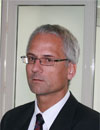 Joachim Knebel: safety is always one of most important issues
Joachim Knebel: safety is always one of most important issues
I think it is very important conference in the field of the liquid metal technology. It gives very well overview on what is done worldwide in this field, especially in Russia, which is the leading nation in the liquid metal technology (lead and lead-bismuth).
In the conference we see the presentations on all research works in Russia, starting 50 years ago. Initially, it was the submarine application and now it is starting to be the civilian application. It is done in parallel to the light-water reactors and sodium reactors just in order to find the solutions for the energy problems.
This conference gives the very good overview of the work in Russia. Of course, I would like to stress we can see also the works done in international collaboration with Europe, Japan and USA.
I am coordinator of the biggest EURATOM project, which deals with the transmutation of the high-level waste. We are studying the heavy-liquid metal cooled subcritical accelerator-driven system.
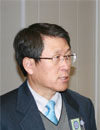 Professor Il Soon Hwang: heavy metal coolant has great advantages
Professor Il Soon Hwang: heavy metal coolant has great advantages
In order to accept this kind of situation in Korea, our university is pursuing the technical solutions to transmute the spent nuclear fuel. We expect that we can eliminate the long-living radioactive isotopes. Eventually we hope to turn all the spent nuclear fuel into low or medium level nuclear waste.
That means we can continue our nuclear power program with the public acceptance. One can say that the transmutation technology could help us to win this public acceptance. This technology is not only environmental friendly but also safe and proliferation resistant.
We see that the heavy metal coolant technology has the great advantages over any other existing technological option for the transmutation applications because of its chemical inertness, high boiling point and good capability for natural circulation.
Therefore, we are going to take the advantage of this Russian innovation in nuclear coolant to develop the safe and proliferation-resistant transmutation technology.
 123 agreement and Russian nuclear industry
123 agreement and Russian nuclear industry
In the series of articles by the American authors that appeared in the Russian press, some new directions of the collaboration are mentioned, that could be initiated if the 123 agreement will come into effect.
First of all, it is the creation of the fast neutron reactors. It is very important, that in this direction Russia can play the role of a donor, and America, correspondingly be a receiver of the technologies.
Development of fast neutron reactors in USA was stopped during more than 20 years, and a main part of groundwork of American specialists was either lost or went out of date. Theoretically Russia could export to the United States its own technologies on commercial prices, but American politicians should overcome their own pride for that and take a principal decision on the possibility of buying the advanced technologies from the recent most probable enemy.
Less ambitious and faster realizable project could become the use on the commercial terms of the Russian experimental base - first of all possibilities of NIIAR - for the American program on creating of the fast burn-out reactor.
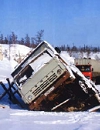 And what has the rabbit thought?
And what has the rabbit thought?
Published project of the economic development of Russia till 2020 - Conception 2020 provides the construction of NPPs of the small and medium capacity for the power supplying to the isolated Russian energy zones and for the developing world economies. Appearance of small and medium - capacity reactors is called one of the indicators of reaching the aims of the state policy in the nuclear industry.
The fact of mentioning of small NPPs in program of the government is gratifying, but the absence of the specifics alerts. However, as a lot of people have noticed, friability and amorphism is characteristics to the whole item of the Conception, devoted to the nuclear energy.
What can be hiding above the restrained comments of the conception and what projects can be realized during the next decade?
According to the IAEA graduation small nuclear energy is the reactors with the maximum capacity of 300 MWe. In Russia by the small NPPs is frequently understood autonomous energy sources with the maximum capacity level of 50-100 MWe.
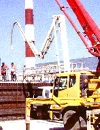 Step-by-step or medium-term
Step-by-step or medium-term
It is evident that the Prime minister was more radical in his speech. Putin hopes to see the commercial fast neutron reactor in the medium-term period, but the report of the ministry authorities provides only step-by-step transition and beginning from 2020.
If we will take as a reference point the words of Vladimir Putin, direction of the activities in the sphere of the fast nuclear energy would be distinctly defined. BN-K will become the commercial reactor in this case without any other alternative. It would be unreal to develop any other project to its commercial state in such a short term. Conception-2020, being a counterbalance to the declaration of the Prime minister, will maintain some chances for BREST reactors.
Some experts have already equated BN with the commercial reactor of the future. But the question is - what will be taken into account - words of the Prime minister or documentation of the ministry?
 Lead-bismuth CANDLE - Japanese challenge for SVBR
Lead-bismuth CANDLE - Japanese challenge for SVBR
Lead-bismuth fast neutron technologies in Russia are close to the demonstration. According to the declaration of the director of the energetic machine building department of the Russian machines company Vladimir Petrochenko, the first NPP with SVBR-100 reactor can be built in Obninsk in 2015.
But Russian SVBR has foreign rivals. One of them can become Japanese lead-bismuth reactor that is using the CANDLE burnup conception.
Reactors of high capacity, as it is well known, can be placed only in the regions with high energetic demands or/and developed nets. For the bigger part of countries such monsters as EPR-1600 or APWR-1700 can be elementary useless - countries of the third world won't be able to consume the produced amounts of electricity.
Besides, developing countries would prefer minimizing possible efforts on behalf of nuclear reactors. Ideally, facilities that don't demand or demand next to nothing servicing during the operation that would be brought to the site by the deliverers, assembled and after the campaign would be returned back to the country of manufacturer would suit them.
 Vladimir Smetannikov: there is a hope, but there is no confidence
Vladimir Smetannikov: there is a hope, but there is no confidence
What functions will have the energy by the flights to the other planets? First function is providing of the engines operating. Propulsion itself is an energy, big energy. By the way, to reach the Mars nuclear fission engine should work only 10 hours (5 to go there and 5 to go back). And it is very important to stress, that nowadays we managed to come closer to such characteristics at testing grounds.
Second function of the nuclear space facility is connected with producing of the great amount of energy. On the Earth a man needs up to 20 kWe×hour daily for the comfortable life. Much more energy will need the participants of the inter-planet expeditions.
Problem of compatibility of a man and reactor in space, that we can hear sometimes, is not an intractable. By the flight to the Mars main danger will come not from the working reactor, that will be properly shielded, and also we will provide its remote location from the place where people will be placed.
Main danger will appear by crossing radiation Earth belts. Compare - cosmonaut can get from the reactor a doze of 0.2 Rem and from flying through the belts - 10 Rem.
 Georgy Toshinsky: lead - bismuth is ready for demonstration
Georgy Toshinsky: lead - bismuth is ready for demonstration
First of all it is important to stress that lead-bismuth technology was initially created and applied at the Soviet naval reactors - it is the project 705 (or the Alfa seria).
At first we didn't have necessary knowledge and experience. Naturally we faced a series of difficulties and failures at that stage. They were overcome thanks to the persistent work of a lot of organizations, first of all IPPE and OKB Gidropress. At serial submarines reactors were working successfully, though, certainly, experience of work with the naval reactors was not so huge as that of the NPPs operation.
At the same time Rosatom scientific-technical counsel has recognized this technology as prepared for the demonstration and included into the federal program for its realization at the pilot unit with SVBR-100 reactor.
The main advantage of this technology is modularity, that allows creating of power generating units of different capacity divisible by 100 MWe (el.) on the base of a uniformed reactor module that is implemented on the machine-building plant and completely finished is delivered by railway or other transport to the NPP site.
 The two lives of the second nuke
The two lives of the second nuke
The second Bulgarian nuclear power plant will have two lives. The first one was a socialist one, and the second - capitalistic. Initially, it was erected to the glory of the everlasting friendship among peoples from the Eastern bloc, and now it is going to be completed for the sake of global energy safety. The first life was cut short with the start of political changes. Could it resurrect at the second attempt?
The first life of the Belene NPP (The Second Nuke) began in 1984. The USSR and Bulgaria signed an agreement on constructing a nuclear power plant on the bank of the Danube River. In case it was done, the energy system of the Balkan republic could have another 2,000 megawatts for starters.
The site was located right across the biggest Danubian island, Belene and just 7.5 km away from the border with Romania. Though the reactors, offered to the Bulgarians, were designed in the USSR, it was the Czechs, and to be more precise, Skodaexport, who contracted the production and assembly of the major equipment. Soviet experts handed all the technological documents and know-how over to the Czechs.
JSC Atomstroyexport and Saint - Petersburg Atomenergoproject merge
 JSC TVEL has issued annual report 2007
JSC TVEL has issued annual report 2007
Nuclear fuel world market is characterized nowadays by the intensification of the competition between the main companies-manufactures. Fuel fabricators that are also reactor suppliers at the same time, begin offering nuclear fuel for the reactors, build by their rivals. That is why the tendency towards the permanent improving of the fuel construction and continuing orientation on the increasing of the fuel burnout depth and better behavior within the core is traced. To a grater extend it is revealed on the fuel market for PWR reactors, states the report.
Philosophy of the free trade, nondiscrimination and international division of labor is becoming more and more characteristic to the world nuclear fuel market. At the same time because of the presence of domestic manufactures some countries are realizing obvious protectionist politics to defend their interests and artificially limit the concurrence from the side of foreign manufactures, most of all Russian ones. For example JSC TVEL during several years faces discriminational measures of the European Union that limit supplies of enriched uranium product within the fuel assemblies.
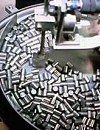 14 years to keep the promise
14 years to keep the promise
Americans prefer quoting Russian uranium openly; Europeans at the same time prefer secret declarations. Agreement on the dumping investigation suspension between Russia and United States is already thoroughly scrutinized; the fact of existing of the same agreement in Europe - already mentioned Corfu declaration - was called in question and even denied.
The declaration was adopted in June 1994 by the countries of the European Union during the summit on Corfu island, that is where a name of this document from. Declaration contained strict frameworks for the European nuclear agency EURATOM - its policy should be realized in a way that will keep the share of European uranium suppliers in European Union not less than 80%.
Practically the same day when declaration appeared, an agreement for the partnership and cooperation between Russia and European Union was adopted. Article #22 of the agreement has withdrawn nuclear materials trade from the general trade agreement. It was promised to Moscow, that status of Russian uranium will be defined during two years.
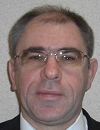 Dmitry Ermakov: First unit is working and that is the principal fact
Dmitry Ermakov: First unit is working and that is the principal fact
Do you mean the tender Finnland-5?
No, it was before the Finnish tender. In 1991 we have begun elaborating new project on the base of 320 series reactor - with the participation of Finnish specialists on the first stage. Atomenergoproyect from St. Petersburg was a chief designing organization, and OKB Gidropress - chief constructor of the facility.
This project was made for the conditions of Finland. Later the country refused temporary from its plans on political reasons, but the concept of the design remained. After signing of the intergovernmental treaty with China about the building of NPP, two alternatives were offered to the Chinese part - NPP-92, where Moscow Atomenergoproyect was a chief designer, and NPP-91.
Chinese examined both alternatives and after long debates adopted the last one. What was there motivation? Probably the reason is that NPP-91 was more evolutional and was closer to the serial 320 project.
Nevertheless, what was the main difference of NPP-91 from VVER-1000/320?
 Vladimir Asmolov made us clear the future of the nuclear energy in Russia in the opinion of the Rosenergoatom corporation
Vladimir Asmolov made us clear the future of the nuclear energy in Russia in the opinion of the Rosenergoatom corporation
Russia may return to the elaboration of the design of VVER-1500 reactor. It became obvious after the speech of scientific-technical policy director of a Rosenergoatom corporation Vladimir Asmolov in Moscow at the International Scientific Technological Conference - 2008 Safety, effectiveness and economy of the nuclear energy.
We have reserve of researches, which we had been realizing from 2001 to 2004… This program (VVER-1500) is frozen today. I think, that when the unit of this type will be demanded, those approaches, that have been realized and are being realized by NPP-2006designing and constructing, will be applied at a so-called serial NPP-2006 unit of an increased capacity, - stated Asmolov.
Rosenergoatom representative was rather skeptical about the future of low-capacity facilities: We think that facilities under 20 MWe capacity - very low-capacity facilities or local facilities - can't be economically justified.
Opinion that safety demands there (in the small energy sector) are not so tough is false. Closeness to the consumers only toughens the safety demands - said Asmolov.
 Nicolay Sorokin about operation experience of Rosatom's NPPs in 2007
Nicolay Sorokin about operation experience of Rosatom's NPPs in 2007
A series of works for increasing neutron-physic characteristics was implemented at nuclear power plants with RBMK reactors of Rosenergoatom company - declared a technical director of the company Nicolay Sorokin in his speech in Moscow at the International Scientific-Technical Conference - 2008 Safety, effectiveness and economy of nuclear energy.
These works give us a chance to revise earlier limitations maintaining all the current safety standarts, said Sorokin.
The nuclear operative also noted that in 2007 works for increasing fuel effectiveness were continued. New types of fuel with increased stability and burnout coefficient have been introduced - commented Sorokin on the activities undertaken at VVER reactors.
Fuel for RMBK reactors is also being modernized, though there are no plans of building new channel-type reactors - stated Sorokin. He also stressed, that at all RMBK units uranium-erbium fuel with 2% enrichment is used now.
BN-350 reactor facility. Collected experience. Part 4.
Radiation safety completely totally corresponded safety regulations.
Radiation environment at BN-350 reactor facility was examined as higher capacity levels were mastered, and was controlled further during the operation. Research program included definition of radiation flows at the reactor junctions, coolant and shielding gas activity measurings. Matching of measurements and calculations was satisfactory.
In the rooms of the first circuit radiation environment at operating reactor was defined by 24Na (about 10 Cu/l). After reactor was stopped main role were playing 22Na isotopes, nuclides of corrosive origin, 137Cs and 134Cs, getting out through the fuel elements leakages. Radiation load over the personnel was insignificant and didn't exceed control levels.
Speaking about radiation environment near the facility location, it was safe during all the lifetime of the reactor and was defined by the radionuclides of the natural origin. Radioactivity emissions were only some percent from acceptable.
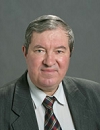 Anatoly Petrov: we are ready to help
Anatoly Petrov: we are ready to help
RBMK has gone through many changes during its 35 years history. Fuel enrichment was increased from 1.8% to 2% (235U) to increase the burnup. Then, after Chernobyl incident, uranium enrichment was increased to 2.4% in order to reduce the steam radioactivity effect. This way within the active zone was remaining a big amount of so-called supplementary absorbers (SA) that reducing αφ worsened economic characteristics of power units because of the supplementary neutron capture.
Fuel with the addition of burning out erbium absorber was worked out some years ago for RBMK. In 1996 loading of this fuel of 2.6% enrichment started and from 2001 enrichment was increased to 2.8%. As the old fuel was replaced by uranium-erbium one, systematic SA unloading and αφ reducing began, and a burnup fraction of the unloaded fuel increased. At the expense of uranium-erbium fuel this characteristics increased today from 20.9 to 25.8 Mwe×day/kgU. Burnup will be increasing further as the reactors will be loaded with uranium-erbium fuel.
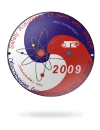 EDO GIDROPRESS will hold the 6th International Scientific and Technical Conference Safety Assurance of NPP with WWER
EDO GIDROPRESS will hold the 6th International Scientific and Technical Conference Safety Assurance of NPP with WWER
From 26 to 29 of May 2009 EDO GIDROPRESS will hold the 6th International Scientific and Technical Conference Safety Assurance of NPP with WWER. This biannual event is traditionally held at EDO GIDROPRESS with participation of the Rosatom and support of the IAEA.
Both Russian and foreign experts take active part in the conference. The previous, 5th Conference, was attended by representatives of 11 foreign countries.
The Conference is aimed at solving problems of operability and safety assurance of NPP with WWER reactor plants in the course of designing, R&D implementation, operation and decommissioning.
The purpose of the forthcoming Conference is to organize an international forum for information exchange and discussion of the subjects related to safe operation of NPP with WWER.
The Organizing Committee of the International Scientific and Technical Conference Safety Assurance of NPP with WWER invites interested specialists and organizations to participate in this event.
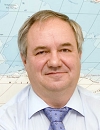 Yuriy Baranaev: we still have the future
Yuriy Baranaev: we still have the future
Frankly speaking we were not particularly enthusiastic about the refusal of the idea of creating Volnolom-3 floating NPP: we have had rather convincible arguments. In due time IPPE was managing elaboration of a state program on a large-scale ASMM introduction in remote isolated regions. This work was led directly by now late Yuriy Anatolievich Sergeev, Honored power engineer of Russia, who had started his career from the post of a deputy scientific manager of TES-3 project.
He initiated analytical researches of low-capacity nuclear generating units market, was an organizer and a participant of several expeditions to the remote Northern and North-Eastern regions. There was elaborated a program specifying about 100 locations for the possible small NPPs stationing. Later on this amount was reduced to 30 and this program was endorsed by Gosplan of USSR in sixties. Several NPPs with different reactor facilities, including ABV were mentioned there.
As a result it was found out, that for the large-scale ASMM introduction it was necessary to promote low-capacity facilities.
BN-350 reactor facility. Collected experience. Part 3.
By the designing of the control units and SG protection system a serious consideration was given to the detecting and localization of large leaks. Incidentally, designed systems coped with this task perfectly. But authoring control systems were very inertial to detect leaks timely.
In 1973 and 1974 BN-350 had eight leaks, including two large ones. Practically all of them appeared on the lower edge of the weld, which connected stamped bottom of the Fild pipe with the pipe itself. The result of the incidents was a withdrawal of the SG with the loop for repair, that demanded limitation of the facility capacity.
Repair, which is carried out by the defective pipes opacification, was not successful. By next SG launches leaks in the other pipes were appearing.
We managed to cope with this problem after the complete overhaul of the 5 SGs with the total replacement of the evaporator matrixes in 1974-1975. Fild pipes 32×2 mm with the stamped bottoms were replaced by the 33×3 mm pipes with the chiseled bottoms. Though we haven't managed to exclude leaks, but we have reduced their amount significantly.
Third HLMC-2008 conference will be held in Obninsk
 Margarita Mashina: personnel for the industry should be brought up from the 6th form
Margarita Mashina: personnel for the industry should be brought up from the 6th form
Certainly, in the nineties it was a difficult task. Usual promotion, which existed earlier in the industry and was connected with the launch of new generating units in the country and abroad, disappeared. As a result we had been observing stagnant processes during the decades, which had a negative impact on our people.
A person can develop if his activity stimulates him and gives him new tasks. But if his work becomes monotonous and routine a person has to search for another implementation of his capacities. If a person realizes his potential, he comes to the strong personality crisis, and, at the end of the day, to the personality death. In the nineties there were a lot of people in a depressive state and in a hopeless situation. We tried to promote this people somehow - were recommending them for the further education, for mastering parallel professions, administrative ones. But sometimes we failed to do so.
Today we witness a nuclear renaissance. Industry gives us a new task - to form an echeloned human resources reserve. It should be a lot of such reserves.
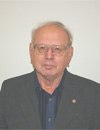 BN-350 reactor facility. Collected experience. Part 2.
BN-350 reactor facility. Collected experience. Part 2.
The topic of fast neutron reactors is of the top priority for our edition. We offer our readers to come back to the backgrounds of our nuclear fast neutron reactors program - the fast neutron reactor BN-350.
By the reactor facility BN-350 designing in the early sixties, the principle of maximum usage of natural physical processes was stated and sequentially realized. It had significantly simplified the facility, increased a reliability of exploitation and security, reduced the necessity of technological parameters automatic regulation and excluded the necessity of interfering of the personnel by the transitional processes and by various incidents.
It should be noted, that Russian fast sodium reactors appeared to be almost the first reactor facilities, which had been widely using natural physical processes. On the reactors of the other types the idea of using this principle was implemented only after serious incidents on NPPs (TMI-2 and Chernobyl).
Let us have a look at two examples of using natural processes in BN-350 project.
TVEL Corporation starts a program of production diversification
 BN-350 reactor facility. Collected experience. Part 1.
BN-350 reactor facility. Collected experience. Part 1.
First of all, Russian specialists planned to prove or to correct scientific and technique conceptions of fast neutron reactors while constructing and exploiting BN-350. It was rather important to specify BN peculiarities and processes, flowing both by normal operation and by abnormalities and incidents.
It was required to prove or to disprove the principal decisions on equipment constructions, on technological systems designing and on security principals. It was planned to examine reasonability and necessity of making changes in structural and circuit designs of fast neutron reactors, and to optimize them for the future facilities.
Undoubtedly, one of the main tasks of BN-350 was to achieve a practical experience of bringing into service of fast rector with sodium coolant. Domestic specialists had to learn operating conditions managing, to realize the rightness of foreseen precautions (or to detect an excess of this precautions), and finally, to optimize the behavior of personnel in different situations.
Russian government approved a General plan of power industry objects placement till 2020
 To spite a mother
To spite a mother
Toshiba may become not a very fortunate ally for Russian nuclear scientists, but surely will become their bitter enemy. Westinghouse controlled by Japanese is slow and sure regrouping its powers in East Europe, preparing for driving out Russian TVEL from that business. And in Kazakhstan Japanese-American alliance is trying to stop uranium export to Russia and to redirect uranium resources of the Republic to servicing the needs of Westinghouse.
Allegedly, Atomenergoexport could propose Japanese corporation its services in the sphere of a nuclear fuel cycle. There is some point in that. But the problem is that Japan will be a full member of the American GNEP initiative, within this initiative some dangerous tendencies for the Russian nuclear fuel cycle are taking shapes.
Perhaps, the only argument for the cooperation with Toshiba might be a desire to exert pressure upon the Unite States, which, you know, have stopped a signing procedure of 123 treaty with Russia. Washington may become more compliant indeed if realizes, that Moscow is capable of managing without Russian-American nuclear friendship.
 Victor Severianinov: confession of an operative
Victor Severianinov: confession of an operative
I am a Muscovite, I joined the Moscow Engineering Physics Institute after the front and graduated from this university in 1954. Two years before that, I had visited Obninsk to undergo practical trainings as a forth-year student. I had been in the Laboratory B for a month. Finally, I and my fellow students - the whole group, about ten students - were sent to Obninsk.
We didn't object to such a turn in our destinies, and at that time it was impossible to object. Frankly speaking, we all were really very glad. Our teachers on the question about the place of our future work usually were giving the following answer: Not closer than Urals and not further than Baikal. And we found ourselves on the object that was only 100 km from Moscow. Of course we were glad, frankly speaking.
Everything happened this way. We have been given a room, Ninel arrived (Ninel Andreevna - Victor Sergeevich's wife). I turned over my duties of an engineer-physicist to my wife and began working at the reactor control desk.
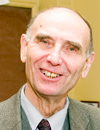 Lev Kochetkov: from mercury to sodium, from BR-1 to BN-600
Lev Kochetkov: from mercury to sodium, from BR-1 to BN-600
Don't you know that sodium was not the first candidate for the role of a coolant for fast reactors? There were other candidates that seemed to be more promising than sodium.
In our country IPPE has made the most significant contribution to the development of fast reactors, certainly, by the great support from other domestic organizations. But fast reactors research has been started in the USA. Most important priority at first was to find the method of plutonium enrichment for military purpose.
First we had to guess, that fast neutron spectrum is capable of improving reproduction characteristics! A crucial role must have played Enrico Fermi.
Generally speaking, history of nuclear energy has examples of genius inspirations. I always remember the words of our compatriot academician V.I.Vernadsky, pronounced in 1922 about the prospects of nuclear energy. How could he at that time foresee the appearance of NPPs - it is mind-boggling, as all main discoveries that paved the way for using nuclear energy have been made later.
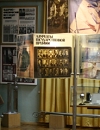 From abacus to TOPAZ - guided tour in IPPE museum
From abacus to TOPAZ - guided tour in IPPE museum
Look at these unique exhibits. Here you can see the block of graphite sharing of the First NPP, and behind it - simple abacus of Mikhail Egorovich Minashin. Namely these historical abacus were used to make physical and thermal designs of the First NPP in the world.
The way this abacus appeared in the museum that is another story. We have started a new educational program Nuclear project in the grandchildrens eyes. Grandniece of Mikhail Egorovich wrote a work about her father that was successfully presented on one regional and two All-Russian student's conferences. Grandmother decided to hand over to the museum such a rear relic as gratitude.
Abacus was used to add and subtract, and a slide line - to divide and multiply. This way were implemented rough calculations. And a more precise technique was in the neighboring room: young girls were chattering by the arithmometers. Operations that demanded weeks and months at that time now are made in a split second by modern computers.
 Personnel for Kazakhstan - background for the nuclear friendship
Personnel for Kazakhstan - background for the nuclear friendship
No doubt, independent Kazakhstan has a full right to enter in any alliance and sign any treaties with foreign companies, including Westinghouse. Moscow will have to think over the way of convincing Astana not to refuse from nuclear cooperation with Russia.
Profitable economic relations are the cornerstone of the Kazakh-Russian cooperation. Supplying uranium for Russian nuclear power plants, Kazakh nuclear specialists have a right to hope to receive from us something more than money in return. One of such ways of a fair exchange was mentioned in the first part of the article - transfer of Russian reactor technologies PWR-300 to Kazakhstan.
One more important direction of cooperation where Russia can be of a great help for its Central Asian neighbors is personnel training for nuclear energy sector.
JSC VO Tekhnopromexport and JSC Atomstroyexport are setting up a joint venture
 Conflict of nuclear initiatives
Conflict of nuclear initiatives
If the GNEP principles concern the technologies of fast reactors and closed fuel cycle, what does Joseph Adda, the Minister of Power Engineering of Ghana have to do with it being one of the GNEP signers? What is the purpose of persuading the delegations from Cameron, Tanzania and Tunis in the IAEA headquarters? How to explain the intention to involve Georgia into the GNEP if not by a desire to do Moscow an ill turn?
Will the situation be such that the respectable African states will demand their share of fast reactor technologies in the future? Washington doesn't think so. Thus, the discriminating principle of the GNEP is confirmed, the principle that states the old American dream: to create a certain superstructure that will duplicate and actually replace the IAEA and NPT, naturally on the basis suitable for the USA.
CMP won prize for high product quality
Preliminary 2007 results show JSC Mashinostroitelny Zavod’s profits of over RUR8bn
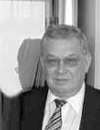 Victor Murogov: work on preservation of nuclear knowledge continues
Victor Murogov: work on preservation of nuclear knowledge continues
I take part in realization IAEA's program for preservation of nuclear knowledge, which we have begun yet at that time when I was IAEA Director General Deputy - in 2001. This program was arisen in accordance with the proposal of developing countries under support of the West states, and now it is at the final stage of realization.
IAEA issued a set of reports containing the opinions of scientists about why it is necessary to take care of knowledge preservation just in nuclear power. Now the search of consensus is going regarding to understanding what namely should be preserved and how it is necessary to do it.
If to tell about the first item of work (why the nuclear knowledge deserves special concern) the corresponding guidance about specificity of nuclear knowledge was prepared by IAEA. It says about necessity of nuclear knowledge preservation for successful operation of NPP, for industry and nuclear safety.
 Fast, thermal, dry, wet - notes of the eyewitness
Fast, thermal, dry, wet - notes of the eyewitness
At the end of November the second international scientific-technical conference on the theme Development of nuclear power on the basis of closed nuclear fuel cycle (NFC) with fast neutron reactors was held under the aegis Rosenergoatom. The simultaneous participation of both reactor physicists and NFC specialists became the spirit of this conference.
Although the speakers were invited in advance, the conference agenda envisaged open round-table discussion of presentations. International status of the conference first of all was due to participation of Frenchmen Bruno Sicard. The American delegation included people from the program for weapons-grade plutonium. It should be noted that the majority of foreign participants didn't demonstrate any activity at the meetings.
It was interesting for many of participants to hear the position of the French. Now the main criterion of Paris is the following - don't accumulate spent nuclear fuel (SNF). It is possible to achieve it only by reprocessing of spent fuel.
CMP got the RF Government’s science and technology award
MSZ automated nuclear fuel fabrication lines
NCCP held environmental protection and ecology meeting
MSZ produced 100,000-th fuel assembly for RBMK
Rosatom state corporation will build new head-quarter in Moscow
 Valery Yarygin: Apophis can change priorities
Valery Yarygin: Apophis can change priorities
The 238Pu is not only very expansive, but also very dangerous isotope. If, Lord forbid, an accident will happen during the launch, we should remember that the injurious factors of the 238Pu would multiply exceed the injurious factors of those isotopes that are produced in the reactor with the uranium fuel However, the United States launched already about 30 space vehicles with plutonium generators and are going to continue this program. They also sell such satellites to the European Union. Figuratively, just like the fast food damaged the bodies of the Americans, these radioisotope generators damaged the space nuclear program of the USA.
In general, however, an example with RTG shows that any idea could be realized if so needed for the solution of national problems. In the American space program you may find the clear statement - if the space vehicles with the nuclear energy sources will obtain the new quality, they could be applied.
BN-800 fast breeder project moves forward
Serguey Shmatko may leave Atomstroyexport
 USA and Rosatom have initialed a draft amendment to Suspension Agreement
USA and Rosatom have initialed a draft amendment to Suspension Agreement
The U.S. department of commerce and the Russian Federation's Federal Atomic Energy Agency (Rosatom) have initialed a draft amendment to the agreement suspending the antidumping investigation on uranium from the Russian Federation (Suspension Agreement).
The proposed amendment will allow Russia to export its uranium products to the U.S. market in accordance with the export limits and other terms detailed in the amendment. The U.S. financial department is now waiting for comments from all interested parties, which can be submitted within 30 days.
The suspension agreement was signed on October 30, 1992 on the basis of an agreement by Russian government to restrict the volume of direct or indirect uranium products exports to the United States.
 Valery Yarygin: Apophis will not wait
Valery Yarygin: Apophis will not wait
The power level of the generator is some 150 W, and this power is producing by the big cylinder comparable with two-month piglet where some 13 kg of 238Pu is stored. Can you imagine it? The TOPAZ reactor requires approximately the same amount of the uranium dioxide, but it is the uranium, not highly toxic plutonium. Even more, the Americans install two generators on the Cassini craft.
The 238Pu is very expansive and very dangerous isotope. If, Lord forbid, the accident happens on the start, the 238Pu will create much bigger danger for the human being in comparison with those isotopes, which are accumulated in the uranium-fuelled reactor. However, the United States started already some 30 spacecrafts with the plutonium generators. They are going to continue its program, and even selling such crafts to the European Union. You know, the fast-food damaged the bodies of the Americans, and the isotope generators damaged the space nuclear program of the USA.
Kozloduy NPP management thinks highly of cooperation with Russian nuclear industry
TVEL supported a Russian young piano player’s concerts in Czech Republic
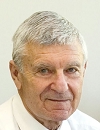 Georgy Toshinsky: we continued to work
Georgy Toshinsky: we continued to work
It will be required to draw wires from floating NPP to the shore, but transportable reactor unit will have to transmit heated steam to the Customer on the land…
Just a moment! Really we will have to draw wires from the floating NPP, because it has its generators, transformers and etc. There was this experience in Soviet Union - these are floating gas turbine plants Arctic lights. But there were a lot of problem with their operation: for example, with strong change of water level and other natural conditions.
It is more reliable, if the plant is on the solid foundation, but not on the water.
Do you want to say that reactor unit SVBR arrives to the Customer, discharges on the shore and is connected to the local infrastructure there already?
Exactly! It is transported by the sea, put on the platform by crane, traveled by road or by railway to the site of installation, then loaded into a pit by crane, connected to the pipes and put into operation. And in 7-10 years the pit will become empty, spent core will come back to Russia, and another battery will be installed at this site.
Five truths and untruths of Kirienko-Bodman Statement
Is it true that signing of Kirienko - Bodman joint statement is the successful for Russian energy nuclear complex?
It isn't true. Using the only (after decommission of BN-600 reactor) fast reactor BN-800 for utilization of weapons-grade plutonium will make difficult to work on closing nuclear fuel cycle (NFC), in particular, to restrict the opportunities of Russia for recycling reactor plutonium (accumulated in reactor), that, in its turn, to postpone resolving a problem of nuclear waste and conversion to use of almost unlimited resource base of 238U.
Was there damage to Russian civil nuclear sector interests? If yes - how serious it was - it would be estimated only after removal of security classification from the results of technical consultations between Russian and American experts.
Closed or excess
Strictly speaking, Russian atom doesn't need in BN-800 reactor. Sodium technologies serviceability in Russia is proven by multiyear experience of BN-600 reactor operation, but BN-800 reactor can't go to commercial level. Implementation of BN-800 reactor into closed fuel cycle - mastering of technologies for reprocessing spent nuclear fuel (SNF) of VVER reactors, fabrication of new fuel from them, reprocessing of SNF of BN-800 itself and other - should be priority of number 1 for this reactor.
But it is impossible to solve this task with simultaneous using BN-800 for weapons-grade plutonium utilization. And if decision about political usage of BN-800 reactor is adopted ultimately, Russia will have a risk to freeze its current interim state for two-three decades - excellent, the best fast reactor technologies in the world and absolutely no closed NFC.
Frozen opening
Nuclear renaissance requires sacrifices. But if in far African Niger real blood runs in the struggle for uranium, in India more close to us only the fate of Cabinet of Ministers has been sacrificed at the altar of peaceful atom. Junior partners of Indian government from left parties have blocked a passage of so-called nuclear deal between India and USA, having recourse to threat of ahead-of schedule election.
Indian press harried to name negative reaction of Russia on this event. The largest newspapers of Asian democracy note that Sergey Lavrov demonstratively refused to meet with its Indian colleague arrived to Moscow with official visit. The complaint of the Russians is that Russia expected to conclude several profitable contracts for construction of NPPs in India - of course, only in the case, if India-USA nuclear deal is going its way.
Latvia approves draft deal with Russia on spent nuclear fuel
Russia to complete NPP in China, build gas centrifuge plant
 Anatoly Zrodnikov: everything in ideology starts with definitions
Anatoly Zrodnikov: everything in ideology starts with definitions
So now we are developing fast reactors of two types - commercial fast reactors of small series for conversation period and commercial fast reactors of new generation. Early putting into operation of the first type reactors will give an opportunity to stop accumulation of SNF of VVER reactors and to carry out mastering technologies of closing NFC at industrial level. Commercial reactors of the second type will replace VVER reactors, which are under construction today, as they are decommissioned.
It should be admitted that BN-800 project is practically ready reactor of small series. Of course, we should consider all those knowledge, which were accumulated during period of downtime of this project and introduce necessary changes and modifications, improve and obtain modern project of fast reactor of small series. To serve own needs of Russian nuclear power in the part of handling of SNF of VVER reactors, up to 5 fast reactors of small series should be constructed and about the same number of reactors for serving those thermal reactors, which Russia construct abroad.
Russia to supply 7 kg of nuclear fuel for Ukraine test reactor
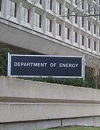 Vladimir Rychin: The case of SWUs
Vladimir Rychin: The case of SWUs
The day before the Day of Nuclear Industry Worker Rosatom received a small but nice present from United States Court of International Trade. American justice has confirmed as in the case with Eurodif that Russian contracts for uranium enrichment are services rather than goods and they can't be subject to USA's antidumping legislation.
There were only few who doubted in favorable decision from the Court concerning the case Techsnabexport against the United States. American system of judicial legislation didn't leave any hope to Russian opponents - US Department of Commerce, USEC corporation and local nuclear trade union. French SWUs don't differ from Russian ones, and uranium enrichment at Rosatom's enterprises doesn't differ from analogous work in France.
Nuclear power plant construction a priority for Russia - Ivanov
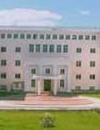 Fifth international workshop for fast reactors was opened in Obninsk
Fifth international workshop for fast reactors was opened in Obninsk
Today we are gathering here in the frame of Strategic Small Club for fast reactors. This club has been established at the beginning of century by the representatives of four countries - USA, France, Japan and Russia. So, now we are starting the regular session of our club, which is to discuss the actual problems of fast reactor technology application for energy supply and stable development of civilization, the head of the IPPE Anatoly Zrodnikov said. The participant geography is expanded, and this is one more proof of growing interest to the fast reactors around the world. The experts from 10 countries came in Obninsk to engage in the current event. The Russian Federation is represented by the delegations from twelve leading scientific organizations which play the key role in the development of new reactor technology for the Russian nuclear power plants.
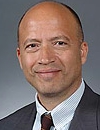 Hussein Khalil: I think you will be very strongly welcomed
Hussein Khalil: I think you will be very strongly welcomed
There are no final decisions because the U.S. Department of Energy is seeking the input from industrial teams around the world. Many different industrial teams are being asked to contribute their ideas. Now we know about the state of the technology; however, it is much more likely if this reactor will be built, say, in timeframe of 2020-2025 then we will need to use more established technology. In this case it has to be a sodium-cooled reactor.
Certainly, there is an interest for the longer term. For example, in the Generation-IV we consider the different reactor technologies as the lead-cooled reactor, because they offer some potential improvements. However the timeframe that envisioned for the GNEP encourages the using of proven technologies. This relates to the sodium reactor and probably also to the fuel type which would likely be either oxide or metallic fuel, with which we have the greatest experience.
Putin signs law on ratification of additional protocol with IAEA
 Peter Bezukladnikov: Group E4 will become one of the main players
Peter Bezukladnikov: Group E4 will become one of the main players
Company Group E4 was established at the beginning of 2006, as a result of integration of seven leading Russian engineering, service and construction organizations. At present Group E4 includes 13 holding enterprises with more than 50 production assets. Three enterprises have large experience of work at nuclear power facilities: Polzunov Central Boiler-and-Turbine Institute Research-and-Production Association (OJSC NPO TsKTI), OJSC Scientific-Research and Design Institute Energoproject (KIEP) and NPO Centroenergomontazh. Each enterprise made the unique contribution to development of USSR's nuclear complex.
Centroenergomontazh's specialists took part in erection of the world's first NPP in Obninsk in 1950. Five of ten Centroenergomontazh's erection managements are located at three NPPs (Kursk NPP, Smolensk NPP, Novovoronezh NPP).
Russia has no plans to import spent nuclear fuel
U.S. lifts restrictions on Russian uranium supplies
Atomstroyexport completed Tianwan NPP first stage construction
A Trap for Minatom. Uranium Zugzwang
When talking about energy security why does everybody think that Russia should provide energy security for the world? Everybody forgets that Russia also needs in providing energy security. It is impossible to achieve equal cooperation in the world without this consideration, Vladimir Putin, President of Russia believes. It is very difficulty to argue with these words of Russian leader and there is no need. May be Russia had to cancel HEU-LEU deal, reconciling with the threats of multibillion losses? One can find another application for LEU obtained from excesses of weapons-grade plutonium than troublesome selling of it to USA. If to formulate the question more correctly, could Russia use the threat of LEU-HEU agreement cancellation as one of arguments, which could convince Washington to reconsider its discriminating attitude towards Russian uranium, in particular, to cancel 116% duties for import uranium from Russia to USA?
Neither deadline for talks, nor commissioning table for Iran NPP
Missile defense: to be or not to be?
No plans to deploy nukes in Belarus
Atomstroyexport and PVO Almaz-Antey Concern Agreed on Strategic Partnership
Mottaki: Iran, Russia in talks on Bushehr nuclear power plant
Proposal to Atomstroyexport to Participate in the Activities for the Chernobyl NPP Shelter Safety Enhancement
Russia, U.S. to sign nuclear power cooperation deal in fall
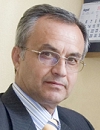 Vladimir Kagramanian: Breeding Ratio Should Be Cheap
Vladimir Kagramanian: Breeding Ratio Should Be Cheap
There is a simple logic here. There are two competitive processes in fast reactor - burning of plutonium loaded and accumulation of new plutonium from 238U. If fraction of loaded plutonium is 20%, its burning is compensated due to accumulation, and energy is generated due to using natural 238U, the reserves of which are "unlimited". But if the content of plutonium is higher than the above-indicated border - 40-50% and more, the rate of plutonium destruction will exceed the rate of its accumulation from uranium. This reactor will become the reactor - burner of plutonium technologically bred, the reserves of which are small, in several times less than the reserves of natural 235U. It means that reactor itself, coolant, the core and other components will be the same both in reactor-breeder and in reactor-burner, but the relationship between physics processes will be different. The tasks, which these reactors will solve, also will be different. Naturally, economy and safety of these reactors will be also different. For example, reactor-burner will have more complicated fuel cycle, and it will be necessary to compensate a drastic drop in reactivity during fuel cycle in this reactor core…
Tianwan NPP Unit 2Generated Billion kWh Electricity
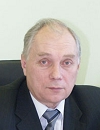 Vladimir Stepanov: Lead-Bismuth Will Work for Civil Needs
Vladimir Stepanov: Lead-Bismuth Will Work for Civil Needs
SVBR-75/100 reactor was born as conversion project from submarine reactor technology cooled by lead-bismuth coolant. Alexander Leipunsky initiated the work on development of this reactor in 50-ies of the last century. When actuality of using this direction in the navy was canceled, we had to find new usages for lead-bismuth. Naturally, we paid attention to civil nuclear power. Together with Boris Gromov, was being the research leader of this direction, we contacted with Rosenergoatom, in particular, with director general Eugene Ignatenko, we first conceived the idea to try to prolong lifetime of the first generation units with VVER-rectors by means of lead-bismuth technology. This moment is the start of SVBR lead-bismuth fast reactor development for civil nuclear power.
Vladimir Poplavsky: Both lead-bismuth and sodium will occupy its niches in future nuclear power
Up to now fast reactors with sodium coolant have been developed in Russia and in the world. This direction is developed sufficiently. So, BN-600 reactor demonstrates positive and reliable operation during 27 years. We believe that at present the technology of fast sodium cooled reactors is substantiated from the viewpoint of both serviceability and safety. Today the point is to improve its economic indices so that this system would be competitive not only "inside" nuclear power, but in comparison with other power sources. Today there is a task to develop NPP project with large power fast sodium cooled reactor, which should be both safe and economy. If to say about technology of heavy coolants, as it is known, there is certain experience of using lead-bismuth eutectic in reactor for atomic submarine. But if we are going to say about development of this technology for its use at stationary power plant, we have to take into account many of its features. In order to demonstrate serviceability of reactors with heavy liquid metal coolant, joint project between IPPE, OKBM and GIDROPRESS is under development - SVBR-75/100 reactor.
 Vladimir Kagramanian: I Feel Pity for the French
Vladimir Kagramanian: I Feel Pity for the French
I feel pity for the French, fallen into real a trap.
Fast reactor technologies and technologies of SNF reprocessing developed in France. The plant for chemical reprocessing of SNF of thermal reactors and fast reactor SuperPhenix were built. Construction of the new NPP with fast reactors for utilization of plutonium extracted from SNF of thermal reactors was scheduled. Everything went in this direction, but in 80-ies the needs in electricity in Europe began stabilizing due to increasing efficiency of electricity consumption. So the necessity of increasing capacity fell away. As a result, the French faced with the problem what to do with extracted plutonium?
A similar accumulation of extracted plutonium was acknowledged as inexpedient both in the UK and USSR (at RT-2 plant). Then the following idea had been arisen - in order to keep people and technologies, MOX-fuel can be started to use in existing light water reactors, and moreover, the adjacent Belgium has demonstrated this technology.
The second power unit of TAES commissioned for commercial operation
On August 16, 2007 at 00:15 by Beijing time the Jiangsu Nuclear Power Corporation (JNPC) commissioned Unit 2 of TNPP for commercial operation having completed respective tests of its operation under rated mode, stipulated by the power startup schedule. Signing of the protocol of Preliminary Acceptance of Unit 2 between ASE and JNPC is expected in the middle of September. As of today, the first Unit of TNPP has been in commercial operation since June 2007, operating with stability at 100 % capacity. It has generated about five billion kW-h since its startup. Unit 2 of TNPP has generated more than 700 mln kW-h by the moment of its commercial operation startup.
EU to fork out $27 million on Russia nuclear safety - NPP operator
The European Commission plans to allocate 20 million euros (over $27 million) for nuclear safety projects with Russia, the country's nuclear power plant operator said Thursday. Rosenergoatom, which runs all 10 Russian NPPs with a total capacity of over 23 GW, said the funds offered by the European Union's executive branch aimed at optimizing their preventive maintenance. The funds will be allocated under The Instrument of Nuclear Safety Cooperation (INSC) program, intended for seven years. A source in the company said Rosenergoatom is supposed to prepare bidding documents no later than December. The INSC has a budget of 450 million euros ($620 million), about one-third of which will be earmarked for joint nuclear safety projects with Russia.
Russia to commission second unit of China's Tianwan NPP in September
Russia's nuclear equipment export monopoly Atomstroyexport confirmed Tuesday it will commission the second unit of China's Tianwan nuclear power plant in September. The company is building the Tianwan NPP in eastern China's port city of Lianyungang under a 1992 agreement. The plant features improved VVER-1000 reactors and K-100-6/3000 turbo generators. Atomstroyexport will start commissioning the second unit following additional dynamic tests, the company said in a statement. We are expecting to commission the unit and start its commercial operation as early as September 2007, the statement said.
U.S. refusal to prolong START-1 fatal mistake - Russian experts
A decision not to renew a major nuclear arms reduction treaty may have dire consequences for U.S. foreign policy and the entire world, Russian experts said Thursday. The Strategic Arms Reduction Treaty (START-1) was signed by the United States and the Soviet Union on July 31, 1991, five months before the union collapsed, and remains in force between the U.S., Russia, and three other ex-Soviet states. Belarus, Kazakhstan and Ukraine have since disposed of all their nuclear weapons or transferred them to Russia, and the U.S. and Russia have reduced the number of delivery vehicles to 1,600, with no more than 6,000 warheads. The treaty is set to expire on December 5, 2009.
Smolensk NPP generated 10 billion kWh electricity since the beginning of the year
Belorussian nuclear poker
No referendum in Angarsk
Armenian NPP specialists visited Volgodonsk NPP
Atomstroyexport: Busher NPP will be launched in autumn 2008
The best innovation solutions of NPP-2006 Fair included in the project of a new NPP
Meeting of the deputy chief engineers at Kursk NPP
IAEA will inspect Rostechnadzor activity
Turbogenerator of the 3rd unit of Smolensk NPP was connected to the grid
The 1st unit of Kursk NPP was connected to the grid
New appointments in Atomenergoprom and Rosenergoatom
Meeting of the Russia chief engineers
Rosenergoatom - EDF exchange of experience
Uranium Peninsula
Idea of NPP construction in Perm region is gaining ground
Declaration of intentions to invest construction of Leningrad NPP-2 units was approved
Renova and Techsnabexport will discuss possible cooperation with South-African golden mining company
Successful tests of equipment at Kola NPP
Construction of the 2nd unit of Volgodonsk NPP will be accelerated
Balakovo NPP launches half year-repair work
Izhorsk plants have completed the 37th shipment for Kudankulam NPP
Utilization of radioactive waste will be simplified
Vladimir Putin has signed the Law on the Ratification of agreements for ITER
Volgodonsk NPP sent to Russian budget RUB 1 billion 748 million
Turbogenerator of the 2nd unit of Kursk NPP was shut down
Silovye Mashiny will increase the volume of orders up to USA$ 2 billion
False function of fire-protection system at Kalinin NPP
Ukraine and Russia held meeting on complex study of Chernobyl NPP units
Bilibino NPP: two-year operation without violations
Training department of Kola NPP successfully passed certification
Russian expert: Reliability of Russian NPPs were checked in Spitak
Quake hits Japanese nuclear plant: a Russian view
I saw a burning transformer on the television. It was no shock to a specialist-a tank transformer can catch fire with the slightest spark. Every project envisages safety measures. Transformers are set apart from each other, so fire cannot spread to cause a leak. Radioactive water could have leaked from the reactor containment sump-but I don't think it could get out of the circuit and pollute the environment, whatever the press might be saying. As for polluted sea, I think that's a paranoid allegation.
The expert dismisses speculation that seismic danger was underestimated when the plant site was chosen: The Japanese are top-notch professionals, and exacting and pragmatic to the utmost degree in choosing plant sites. It was a mere accident, I think.
STUK specialists visited Kola NPP
The 5th unit of Novovoronezh NPP shut down as scheduled
Moscow state university and Rosenergoatom department for management of investment programs have agreed about foundation of the strategic partnership
Silovie mashiny will provide orders for Ukraine enterprises
Atomenergomash contradicted the statement of Nucon-RF about foundation of joint venture for manufacturing equipment for NPP
IAEA experts visited Kursk NPP within cooperation program
Tianwan nuclear plant's 2nd unit reaches full capacity
The No. 2 generating unit of Tianwan nuclear power plant, a Sino-Russian cooperative project, has begun to operate at full capacity, according to an announcement by the China National Nuclear Corporation (CNNC). CNNC said that the second unit is operating at a stable 1.05 million kw and all technical parameters are within set values. Before its test operation, the unit passed a full-capacity safety check by the National Nuclear Safety Administration. After the debugging period, the no. 2 generating unit will officially start commercial operation.
Beloyarsk NPP resumed its operation at full power
Authorized capital of Atomenergoprom is Rub 3.4 billion
OKBM received the government order for new fast reactor for Beloyarsk NPP
Experts hope on Atomenergoprom
Khristenko: Russia and Chine cooperation shouldn't restricted by Tianwan NPP
Over Rub 100 million will be spent for social-ecological measures (GHC, Zheleznogorsk, Krasnoyarsk region
MAYAK general director Vitaly Sadovnikov went into retirement
New technology of radioactive waste reprocessing
Kirienko: Today more 50% electricity is generated by gas fired plants. It's a barbarism
Kirienko: Armenia and Ukraine are ready to take part in Angarsk International Center for uranium enrichment
Kirienko will head Atomenergoprom
BN-800 reactor will be constructed in 2012
Tender on choosing the general contractor for building of the 1st unit Leningrad NPP-2 will be announced in the first quarter of 2008
Sergey Ivanov: Russian power companies are ready to increase investments in Uzbekistan economics
Kalinin NPP: The general contractor was defined for construction of the 4th unit
Federation Council Committee discussed progressing of the program for development of nuclear power and industry of Russia
The 1st unit of Kursk NPP disconnected from the grid
Angarsk electrolyze chemical complex suspended its operation because of lightening struck electric power lines
RF Federation Council ratified Agreement for foundation of ITER international organization for thermonuclear power
Russian people magnify danger of radiation accidents tens thousand times
Baltic plant will manufacture the equipment for Beloyarsk NPP
Kalinin NPP first realized a project of underground deposit for industrial waste
Competitors spread rumors about accidents at NPP
Yury Olenin became a new president of OJSV TVEL
Russia and USA prepared intergovernmental agreement for cooperation in peaceful use of nuclear power
TVEL will become the only supplier of nuclear power for Czech and Slovak NPP
Rostechnadzor head: 143 violations of nuclear rules at Russian NPP were revealed in 2007
Turbogenerator was shut down at Kursk NPP again
Rosatom deputy head Vladimir Travin will chair Atomenergoprom
The peaceful atom appears in internet
Russia actively buys Ukrainian nuclear power engineering enterprises
The 3rd unit of Leningrad NPP will be shut down for half year in connection with capital repair
Russia needs in foreign technologies for realization its nuclear program
Rosenergoatom and open joint-stock company Silovye Mashiny (Power machines) discussed delivery of equipment to NPP
Nuclear engineers suggest to establish interbranch innovation council
JSC MSZ passed quality audit carried out by finish companies Fortum and STUK
Uralchimmash sent a special wagon with container for irradiated nuclear fuel for tests
Rostechnadzor approved the requirements to facilities for immobilization of transuranium radioactive waste
Working meeting on NPP safety issues was held in Moscow
Atomenergomash and Alstom will form joint venture for manufacture of turbines for NPP
Federal target program for development of the 2nd unit of Rostov NPP: chronicle of construction
The Kursk NPP Unit No 2 connected to the grid
Novosibirsk chemical concentrate plant needs more billion RUB
Khristenko: Overall general scheme of RF electric power will be ready in September
AtomEnergoProm will be formed to the end of the year
RF minister of natural resources visits Namibia
5th unit of the Kursk NPP will require investments of RUB 45-47 billion
Russia will take part in establishment of International thermonuclear experimental reactor in France
Kirienko defined top-priority tasks for Priargunsky Production Mining-Chemical Association
Russia is interested in construction of NPP in Belorussia
EuroSibEnergo plans to construct NPP and sell electricity
Second Rosatom's Industrial Innovation Forum launched in Moscow
Two turbo-generators of the second unit were shut down at the Kursk NPP
Russia hopes to sign Belene NPP contract this year - President Putin
New NPP project launched in western Russia
Lavrov: Moscow to fulfill commitment on Bushehr power plant
Russia to commission 2nd unit of Tianwan NPP in September
Rosatom, Interros to co-develop uranium fields in Russia, abroad
Russia to set up radioactive materials control body
Some 20 countries interested in floating NPPs - Russian nuclear official
Rosenergoatom to have talks with Cape Verde Energy Ministry on construction of floating nuclear plant
Russia, China sign commissioning act on 1st unit of Tianwan NPP-1
Czech NPP to start using Russian fuel in 2009 - TVEL
Demand for JSC Atomstroyexport bonds three times exceeds the offer
On May 29, 2007 JSC Atomstroyexport its ASE-Finance debut bonds worth RUB 1 500 000 000. The bond issue of a company operating in high-end nuclear technologies market and constructing nuclear power facilities abroad has spurred investors' interest. The bonds placement was arranged as an auction that involved over 30 investment companies and Russian banks including such large ones as VTB, NOMOS, TRUST, MBRD, Hanty-Mansiisk bank, Promstroybank as well as Troika-Dialog, Capital, RTK Broker and other investment companies. In the course of the placement, investors submitted 81 applications for RUB 4 486 000 000, thus three times exceeding the original offer.
Russia set to sign uranium deal with Australia soon
Russia to complete forming uranium co. by mid-2008
Iran complies with Bushehr NPP construction terms - official
JSC Atomstroyexport and JSC Stroytransgas formed a strategic alliance
 A Trap for Minatom. Three Levels of One Deal.
A Trap for Minatom. Three Levels of One Deal.
Level #1, or level of international law, permits the Russian government to suspend, demand modification or even denounce the HEU-LEU agreement. However, this option is completely blocked at the lower levels. Some contracts (level #2) do not consider any right of Russian side for suspension or cancellation. Besides, any cessation of Russian uranium supply to the international consumers (level #3) will compromise the Russian Federation as a supplier on the world market.
Russian nuclear concern to be incorporated as JSC by December
VTB, Techsnabexport ink memo to produce Namibia uranium
Daily roundup from Russia - May 08, 2007
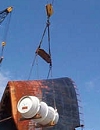 A Trap for Minatom. Per Aspera Ad Negotia
A Trap for Minatom. Per Aspera Ad Negotia
Then the political rescue rangers came, and many people believed in their frankness. In October 1992, the USA and Russia signed the agreement suspending the antidumping investigation on uranium from the Russian Federation - Suspension Agreement - for that uranium, which could be delivered in the United States in the frame of HEU-LEU contract. This rarely generous offer from Washington dissembled a dirty trick. The item M.2 of Article IV of Suspension Agreement forbade indirectly any import to the USA of the HEU feed component.
Atomenergoprom could be established in May-June 2007
Russia's TVEL corp. to ship nuclear fuel to Vietnam
Russia to shift energy focus on nuclear power - Ivanov
The Russian government will review its energy strategy in April to increase the share of nuclear power, hydroelectric and coal industries in power generation, the first deputy prime minister said Friday. Russia is likely to experience an energy deficit in the future if it continues to rely on thermal power generation mainly based on non-renewable reserves of natural gas. The nuclear power industry must become a solid foundation for power generation in Russia if we want to reduce our dependence on natural gas, said Sergei Ivanov, addressing the collegiate of the Federal Nuclear Power Agency (Rosatom).
Russia ready to expand ties with Chile, build nuclear plants
Daily roundup from Russia - February 24
Daily roundup from Russia - February 21
No final decision to quit INF treaty - FM Lavrov
Daily roundup from Russia - February 19
Daily roundup from Russia - February 15
Daily roundup from Russia - February 14
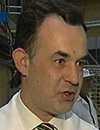 TVEL net profit grows 10%, y-o-y, to $124.3 million in 2006
TVEL net profit grows 10%, y-o-y, to $124.3 million in 2006
TVEL, Russia's leading producer and supplier of nuclear fuel for power plants, said Monday its net profit in 2006 increased 10% on the previous year, exceeding $124 million. We will be able to determine the exact amount of the [2006] net profit in February-March 2007, after the company's board of directors approves the financial results for the year, said Anton Badenkov, the company's acting president.
Daily roundup from Russia - February 13
British firm set to upgrade Russian nuclear storage facility
Techsnabexport, Renova to develop uranium deposits in Africa, Asia
Russia pins energy hopes on new nuclear monopoly
President Vladimir Putin recently signed the so-called tunnel law, which is opening new vistas for Russia's civilian nuclear power industry. Its official title is as follows: The Law on the Peculiarities of Managing the Property and Shares of Organizations Using Nuclear Energy and on Relevant Changes in Some Legislative Acts. The document had previously been approved by the Duma. The law is designed to rationalize the legal and institutional conditions for the operation of the energy-and-industry sector, and make it more competitive internationally and more attractive for investment. It separates the Russian nuclear power sector into military and civilian parts.
TVEL completes restoration at Hungarian NPP
Belarus to start building its first nuclear power plant in 2008
Belarus plans to start building its first nuclear power plant in 2008. Belarus's National Academy of Sciences said Monday the NPP's first unit will be commissioned in 2013-2014, and the second unit by 2015. Their total power will be 1,000 megawatts. Another two units will be built by 2025. Earlier, a deputy chairman of the academy presidium, Vladimir Timoshpolsky, said Russia and France are the likeliest partners of Belarus in the project.
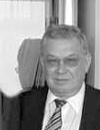 Victor Murogov: nuclear renaissance - perspectives and threats for Russia
Victor Murogov: nuclear renaissance - perspectives and threats for Russia
Professor Victor Murogov - IAEA Deputy Director General in 1996-2003, Obninsk Institute of Physics and Power Engineering (IPPE) director in 1992-1995. First director of INPRO program - international project on innovative nuclear reactors and fuel cycle. In a recent interview to AtomInfo.Ru, professor Murogov spoke of the nuclear renaissance, international markets and Russian nuclear perspectives abroad. Below there are the excerpts from the interview.
ASE wins tender for Belene NPP construction in Bulgaria
5th International Scientific and Technical Conference Safety Assurance of NPP with WWER which will be held on 29 May - 1 June, 2007 at FSUE EDO GIDROPRESS, Podolsk, Moscow Region, Russia
Gref: outlook for Indo-Russian trade and economic cooperation
What units is Russia going to build on new Indian sites? These will be VVER-1000 reactors (a 1,000 MW water-cooled reactor), which use the most up to date technology in the nuclear industry. As many as 52 such units are already operating successfully, 14 of them in Russia. Their service life is over 1,000 reactor-years. According to independent experts and the IAEA, the Russian VVER-1000 is one of the most reliable reactors in the world. Its safety is comparable to NPPs in Europe, the Unites States and Japan. At the same time, the price to quality ratio makes the Russian reactors superior to their foreign analogues.






















































